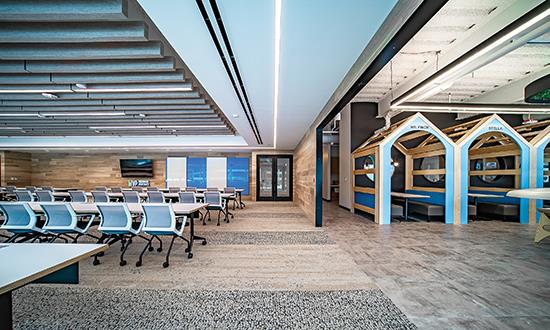The Top 250 Design Survey: In the rebounding commercial market, designers contend with new challenges - October 2022
By Darius Helm
While the commercial market has been on the upswing for the last year and a half with gains in most sectors, commercial projects are facing the same issues that have plagued the residential market since the first flush of the pandemic-supply, transportation and price.
Typically, a period of economic stress-like a recession, but this time around, a pandemic-is followed by a wave of pent-up demand that gives a boost to business, and after a couple of years, the market largely returns to a more organic growth rate. But this time around, the rebound has more moving parts to it, some moving to drive the pace of business, like the need to redesign everything from offices to senior living centers, and others moving to slow it down, like inflation, rising interest rates and bottlenecks from supply-side challenges across the globe and labor problems here at home. And the pandemic has driven so much reconfiguration of space in the built environment that it’s not yet clear what this means in terms of the total square footage of commercial floor that needs to be surfaced and whether it signals a meaningful departure from historical growth rates.
Nevertheless, at least for now, the market is robust. The American Institute of Architects’ Architecture Billings Index, which is a good predictor of business coming down the pike in the next year, has actually been on the upswing since April 2020, when it hit a low point of 29.5-scores of 50 or higher indicate growth. The index moved into positive territory by February 2021 (with a score of 53.3) and has stayed there since then, though in recent months the scores have drifted down. So, while commercial market growth is expected for at least another year, growth rates may start to moderate in the second half of 2023.
This year, 29% of designers who responded to the survey report that budgets are up, 33% say they’re down and 38% say budgets are unchanged from last year. In the 2021 survey, 32% reported that budgets were up, and 30% said they were down, which is a bit better than this year but likely within the margin of error. But in 2020, with the pandemic raging, only 3% said budgets were up, and 47% said they were down-it doesn’t get much worse than that.
SECTOR OVERVIEW
In the last couple of years, the strongest commercial sector has been medical/acute care, which includes hospitals, clinics and medical office buildings. Last year, the sector that showed the strongest growth was single-family residential, reflecting growth at the higher end of the single-family market, which is where the A&D firms largely work on the residential side. The other residential sector, multifamily, actually saw a contraction in A&D work last year. But this year is a whole different story. The wave of single-family investment has slowed, and the multifamily market is again on the rebound. And this year, 21% of survey respondents report that the fastest-growing market is multifamily, up from 12% last year, making it the fastest-growing sector across the board. And single-family residential fell from 9% last year to just 1% this year.
Another sector on the rise is K-12, which also didn’t fall as severely as other sectors during the pandemic. Higher education was up marginally. Tenant improvement and senior living also inched up. Surprisingly, the corporate (workplace) sector seems to have fallen off the pace of last year, down from 8% to 5% of designers’ votes. And retail, which saw good gains last year, has also declined.
We also asked designers to tell us the sectors for their three largest recent projects. And while the corporate sector still has the biggest piece of the pie, it’s down from 27% of top projects last year to 24% this year. Within corporate, small office and Fortune 500 projects were both down, while large and medium projects grew over 25%, from 11% to 14%.
K-12 large projects were up by 40% (from 10% to 14%), and higher education was up a point. And medical/acute care was flat, while senior living showed growth.
Single-family residential, retail and government were all down measurably, and hospitality also inched down a point.
The biggest gainer in large projects was multifamily, up over 40% (from 7% last year to 10% this year). Designers report that one of the hottest trends is the development of mixed-use spaces, typically multifamily buildings that come with sections for retail, entertainment and fitness, and even hospitality and workplace components.
For the complete Design Survey results, see the October 2022 issue of Floor Focus Magazine.
Copyright 2022 Floor Focus
Related Topics:The American Institute of Architects
